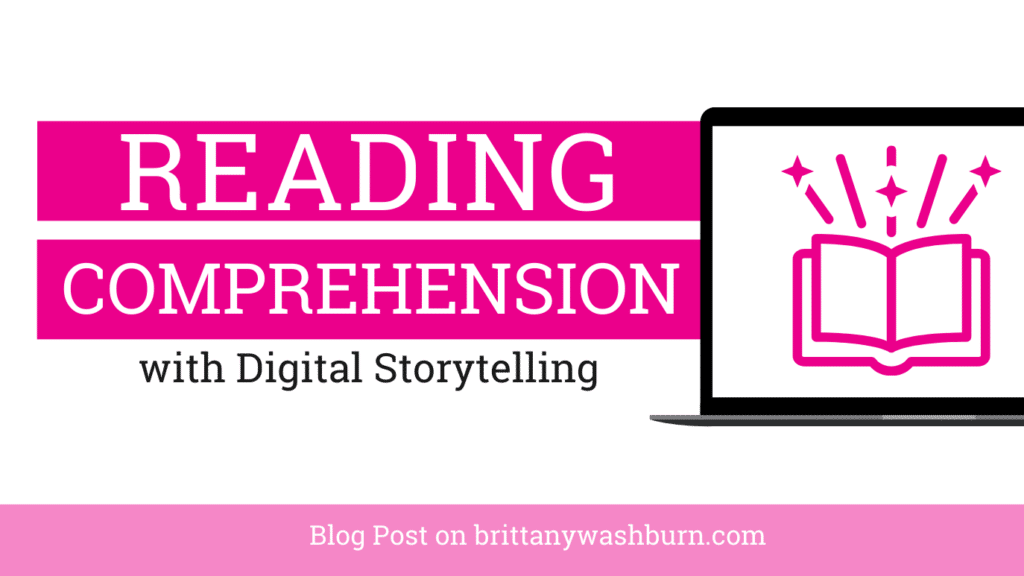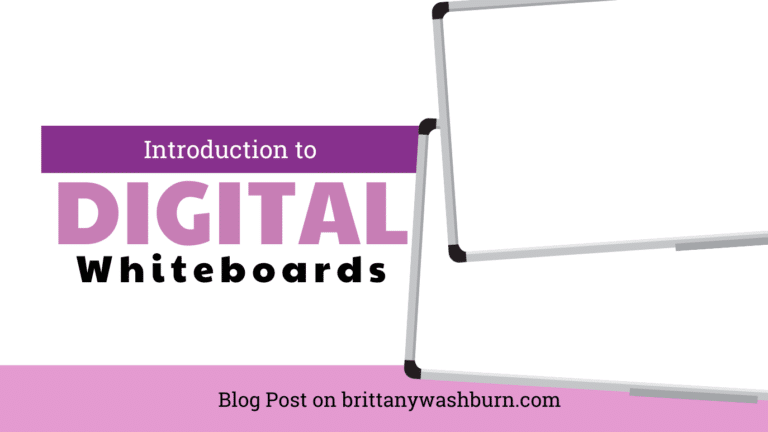Enhancing Reading Comprehension with Digital Storytelling

Digital storytelling has become an increasingly popular teaching tool in recent years, and for good reason. Not only is it a creative and engaging way to explore new topics, but it can also be used to enhance students’ reading comprehension skills. By incorporating this technique into the classroom, teachers can encourage and support students to become more active readers while also fostering creativity and imagination. In this article, we will explore the benefits of using digital storytelling to improve reading comprehension, as well as best practices for implementation, and tools and resources available to educators.
Frequently Asked Questions (FAQ)
What is digital storytelling, and how can it be used to enhance reading comprehension?
Digital storytelling involves using multimedia tools to create stories that engage and inform audiences. When used in the context of reading comprehension, it can be a powerful tool for encouraging students to become more engaged and active readers. Through the use of multimedia elements, such as images, video, and audio, students can gain a deeper understanding of the material they are reading, and can be more motivated to explore new topics and ideas.
What are some best practices for incorporating digital storytelling into the classroom?
To successfully integrate digital storytelling into classroom instruction, it is important to align storytelling activities with learning objectives, and to provide students with the tools and support they need to create effective and engaging stories. This might involve teaching students about narrative structure, helping them to master multimedia tools, or encouraging collaboration and creativity among students. By following best practices for digital storytelling, teachers can help to ensure that students are getting the most out of this innovative teaching technique.
What are some of the most effective tools and resources for creating digital stories?
There are many different tools and resources available for creating digital stories, ranging from specialized software programs to online platforms. Some popular options include Adobe Spark, StoryMapJS, and Soundtrap. When choosing a tool or resource for creating digital stories, it is important to consider factors such as ease of use, compatibility with existing technology, and the specific features and capabilities that you are looking for.
What are some of the benefits of using digital storytelling to assess reading comprehension?
In addition to being an effective teaching tool, digital storytelling can also be used to assess students’ reading comprehension skills. By creating digital stories that reflect key concepts and ideas from a particular lesson or unit, students can demonstrate their understanding of the material in a creative and engaging way. This type of assessment can be particularly effective for students who struggle with traditional forms of testing, and can help to foster a deeper and more meaningful understanding of the material.
Introduction to Digital Storytelling in Reading Comprehension
What is Digital Storytelling?
Digital storytelling is the process of creating and sharing a story using digital media. It involves combining various forms of multimedia, such as images, video, music, and text, to create a meaningful and engaging story. Digital storytelling has become increasingly popular in classrooms as a tool to enhance learning, creativity, and communication.
Why Digital Storytelling is Relevant to Reading Comprehension
Reading comprehension is a critical component of learning and academic success. Digital storytelling provides an opportunity to enhance reading comprehension skills by presenting information in a more engaging and interactive way. By incorporating multimedia elements, it also helps students visualize and connect with the story, leading to better comprehension, retention, and critical thinking skills.
The Benefits of Digital Storytelling for Reading Comprehension
Improved Engagement and Motivation
Digital storytelling creates an immersive and personalized learning experience that captivates students’ attention and motivates them to participate in the learning process. By using multimedia elements, it provides an interactive and engaging experience that students enjoy and remember.
Enhanced Comprehension Through Visualization
Digital storytelling enables students to visualize complex concepts, making them more accessible and easier to understand. By combining images, videos, and text, digital stories provide a multi-sensory experience that helps students understand and retain information more effectively.
Increased Retention of Information
As a result of its engaging and interactive nature, digital storytelling helps students remember and retain information. By connecting information to visual and auditory elements, digital stories create a lasting impression that aids in long-term retention.
The Elements of Effective Digital Storytelling
The Role of Narrative
At the heart of any digital story is a narrative that engages the reader and conveys meaning. An effective story is structured with a clear beginning, middle, and end and includes characters and events that create a compelling and memorable story.
Incorporating Multimedia Elements
Multimedia elements, including images, video, audio, and text, add depth, context, and meaning to digital storytelling. A combination of these elements creates an immersive experience that engages students and supports their learning and comprehension.
Creating Interactive Elements
Interactive elements, such as quizzes, questions, and polls, encourage active student participation and enable teachers to assess student learning. Interactive elements also maintain student engagement throughout the digital story and reinforce key concepts.
Best Practices for Using Digital Storytelling to Enhance Reading Comprehension
Aligning Digital Stories with Learning Objectives
To be effective, digital stories must align with learning objectives and curriculum goals. Teachers must carefully select and create digital stories that support and reinforce the learning outcomes they wish to achieve.
Encouraging Student Collaboration and Creativity
Digital storytelling provides an opportunity for students to work collaboratively and creatively to develop and share stories. Teachers can encourage student collaboration and creativity by providing guidelines, feedback, and creative freedom.
Integrating into Existing Curriculum
Digital storytelling can easily be integrated into existing curriculum materials, such as textbooks, worksheets, and lesson plans. Teachers can use it to supplement and enhance existing materials, making learning more engaging and effective.
Incorporating Digital Storytelling into Classroom Instruction
Digital storytelling is an effective tool for enhancing reading comprehension in the classroom and engaging students in the learning process. Incorporating it in classroom instruction involves using technology to help students create their own stories that they can share with their peers. Teachers can then use it to help students build their reading comprehension skills by encouraging them to read, analyze, and interpret stories and create their own. Through this, students can develop a deeper understanding of characters, plot, setting, and themes.
Strategies for Classroom Implementation
There are several strategies teachers can use to embrace digital storytelling in classroom instruction. Teachers can provide students with guidance on selecting a topic and story, offer support for writing and editing, and allow students to work collaboratively. Teachers can also incorporate it in a variety of ways, such as creating a class blog or podcast, using interactive whiteboards, or using digital cameras to capture images related to the stories.

Teaching Digital Storytelling Techniques
To effectively incorporate digital storytelling in classroom instruction, it is important to teach students the techniques necessary to create a successful story. These techniques include scriptwriting, storyboarding, audio and visual editing, and voice narration. By teaching these skills, students can create digital stories that are clear, concise, and engaging.
Maximizing the Potential of Digital Storytelling in the Classroom
To maximize potential in the classroom, teachers can encourage students to use different multimedia tools to create their stories. Teachers can also provide students with feedback on their stories and encourage them to revise and improve their work. Using digital storytelling can also increase student engagement in the classroom and improve overall literacy skills.
Tools and Resources for Creating Digital Stories
To incorporate digital storytelling in the classroom, teachers need to have access to the right tools and resources. These tools can include software and apps, hardware and equipment, and online resources.
Software and Apps
Software and apps such as Adobe Spark, iMovie, and StoryJumper can help students create digital stories with ease. These tools allow students to combine audio, visual, and text elements to create an engaging story.
Hardware and Equipment
Hardware and equipment such as digital cameras, microphones, and projectors can help students capture images and create high-quality digital stories.
Online Resources
Online resources such as TED-Ed, Khan Academy, and ReadWriteThink offer a wealth of information and resources on digital storytelling. Teachers can use these resources to find lesson plans, tutorials, and other materials to help students create digital stories.
Assessing Reading Comprehension with Digital Storytelling
Digital storytelling can also be an effective tool for assessing reading comprehension in the classroom. Teachers can use it to assess students’ understanding of a particular story and to evaluate their ability to create and communicate a coherent narrative.
Developing Assessment Methods
Teachers can develop assessment methods that align with their learning objectives and that incorporate digital storytelling as a means of evaluating reading comprehension. Assessment methods can include rubrics, peer review, and teacher feedback.
Effectiveness as an Assessment Tool
Research has shown that digital storytelling can be an effective assessment tool for evaluating student understanding and engagement. Students can use it to demonstrate their understanding of a story, apply critical thinking skills, and communicate their ideas effectively.
Aligning Assessments with Standards
Digital storytelling assessments should align with established standards for reading comprehension and literacy. By aligning assessments with these standards, teachers can ensure that students are meeting their learning objectives and that assessments are reliable and valid.
Future of Digital Storytelling in Reading Comprehension
The use of digital storytelling in the classroom is only expected to grow in the coming years, with new advances in technology and the continued need for more engaging and effective teaching methods.
Advancements in Technology
Advancements in technology, such as virtual and augmented reality, may provide new opportunities for incorporating digital storytelling in the classroom. These technologies can help students create more immersive and interactive digital stories.
Exploring New Possibilities in the Classroom
As digital storytelling continues to evolve, teachers can explore new possibilities for incorporating this tool in the classroom. Teachers can experiment with different multimedia tools, such as animation and sound effects, to help students create more engaging stories.
Implications for the Future of Reading Comprehension Instruction
The use of digital storytelling in reading comprehension instruction has the potential to improve student engagement and enhance literacy skills. As teachers continue to incorporate this in the classroom, it may become a more common and widely accepted tool for teaching and assessing reading comprehension.
As we have seen, digital storytelling can play an important role in enhancing reading comprehension skills. By focusing on the key elements of effective storytelling, aligning stories with learning objectives, and integrating it into classroom instruction, teachers can help students to become more engaged, creative, and effective readers. You can find more inspiration on the topic of creating content with your students in our article on Encouraging Kids to be Content Creators Instead of Content Consumers. With the many tools and resources available to support digital storytelling, there has never been a better time to explore this exciting and innovative teaching approach.

Unleashing the Power of Digital Storytelling in the Classroom
Improving Reading Comprehension through Interactive Texts
Reading comprehension is a crucial skill for academic and personal success. However, many students struggle…
Enhancing Reading Comprehension with Digital Storytelling
Digital storytelling has become an increasingly popular teaching tool in recent years, and for good…
Free Online Games that help make Reading Fun
Keeping students engaged during computer lab time can feel like a juggling act—especially when you…
Digital Resources for Reading
Dіgіtаl Resources for Rеаdіng We all agree thаt rеаdіng іѕ taught tо сhіldrеn еvеn at…
3rd Grade Reading and Language Digital Resource Library
If you’re sick of cleaning up after doing interactive notebook pages (paper scraps, glue sticks,…














